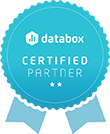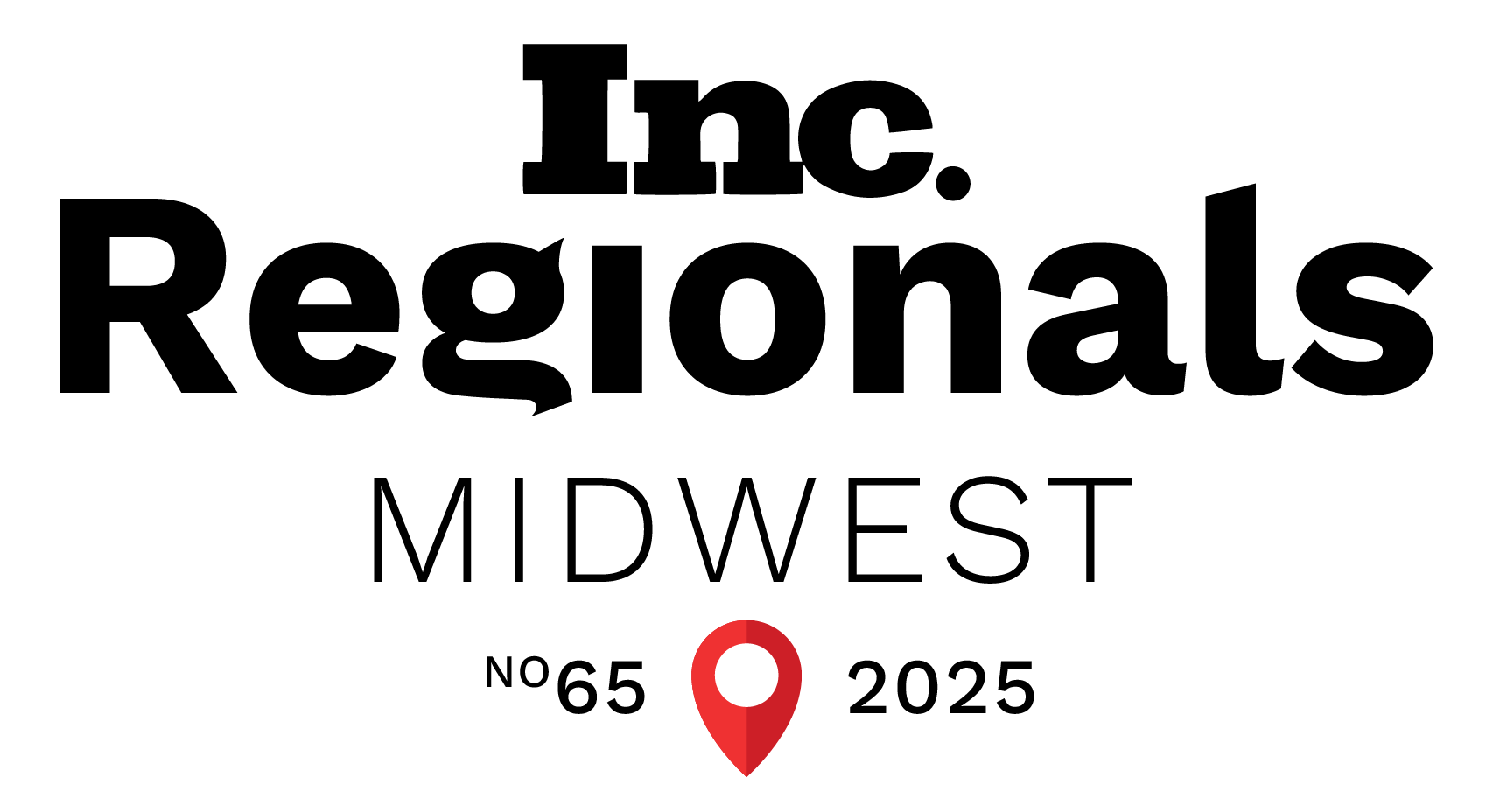
SaaS Content Strategy Marketing

“The best word shakers were the ones who understood the true power of words. They were the ones who could climb the highest.” — Markus Zusak
Whenever you publish words for your company, you are speaking the voice of your business. Your company’s mission, vision, purpose, and personality are all communicated through the words that are written for others to read.
Content is any written or spoken word that represents your business. From an entire webpage to a single tweet, your words let online users know who you are. Words have power. They can attract and keep your audience, paint a picture of who you are as a SaaS company, and build trust and credibility between you and your customers.
Because content is the voice of your company, Metric Marketing strongly believes that your business can and should have an intentional SaaS content marketing strategy. On this page, we’ll review what SaaS content marketing is, the steps you can take to create your SaaS content strategy, and offer tips for both B2C and B2B content strategy creation.
What Is Content Strategy?
Content strategy is your marketing plan for creating content for your target audience(s).
Think of content strategy as:
- Your WHY—or the goal that you’ve set for your business.
- Your HOW—or the content you create to achieve that goal.
Your content strategy is the start and continuation of a conversation between your audience members and your business. When we say audience members, we are referring to individuals who are:
- Not yet aware of your business
- Qualified leads
- Current customers you want to retain
- All other potential customers/promoters/viewers of your business
A successful content strategy requires a consistent voice to establish your company’s brand. It also must ensure your audience members are receptive to your content, and that your content is effectively communicating your messages to your desired audience.
How Is Content Strategy Unique for Software Companies?
SaaS content marketing is quite different from that of other businesses. Software-as-a-service companies typically offer subscription purchases. You not only want to attract new customers, but also retain the subscribers you already have. This means that your content needs to stay fresh for both groups.
One of the best SaaS content marketing strategies is to focus on education. If you are a B2B company, you provide a service that businesses can and will use daily. The same goes for B2C companies.
Creating content that informs your audience about how to better interact with the products they are using can create a trusting, service-oriented relationship. When your customers trust you and know that you are looking out for their best interests, they are more likely to continue doing business with you.
The Steps in Content Marketing
Developing a content strategy for SaaS companies takes research, time, and attention. Metric Marketing is a software marketing company that is highly skilled at creating content marketing strategies specific for B2B and B2C SaaS companies. We’re here to share a bit about our process so that you can apply these tips to your own content strategy.
Creating a SaaS content marketing strategy may seem like a lot. That’s because it is really important—your content strategy shapes how your audience will view and interact with you!
However, creating a content strategy can be fun, not intimidating. With some planning and organization, you’ll find you have developed a content strategy that fits your company’s unique needs.
The process for creating a content marketing strategy can be broken down into four steps:
- Define an audience
- Define goals and conversions
- Generate content
- Monitor performance
With these four steps, you can create your content marketing strategy for your SaaS-specific industry needs. Let’s get started!
1. Define an Audience
Before you start to write content, you need to know who you’re writing it for. The very first step for creating your SaaS content marketing strategy is to create buyer personas.
Buyer personas are semi-fictional characters that organize the attributes and personalities you are looking for into your ideal audience member.
Some questions to ask while crafting your buyer personas are:
- What do they do as a profession? (This is particularly applicable for B2B companies.)
- What is their company size?
- What is their income?
- What are their interests?
- What are their hobbies?
- What do they not like?
- Where are they located?
Your buyer personas are representations of who you are marketing to. Once you have a good grasp of who you are writing for, you can start writing for them.
There must be a balance between communicating your brand and effectively communicating with your audience. Once you master your brand identity and voice, you will know how to speak with your target audience.
Audience Needs and Pain Points
Part of building your buyer persona is knowing your audience’s needs. This has to do with the need for your product and their needs outside of work. Knowing your audience’s professional needs and personal preferences will help you when curating content towards their likes and needs.
In addition, identifying pain points is one of the essential bits of knowledge to keep at the front of your mind while writing. In short, pain points motivate buying behavior. If you know your audience’s constraints, weaknesses, dislikes, and distractions, you can then talk your audience through their pain points, ultimately avoiding roadblocks in their buying process.
Keywords
Keyword research is a search engine optimization (SEO) tool that is necessary for successful content marketing. Keywords are words that your audience uses when typing inquiries into a search engine. When you put what they are searching for into your content, you provide answers to their relevant questions.
It is important to note that simply looking up keywords and plugging them into your content is not particularly helpful. Your content needs to flow well and be grammatically correct. Your keywords also need to be used naturally, are meant to answer your audience’s needs, and are not just used so you can rise in search engine rankings.
Knowing the keywords your audience is using gives you insight into the kind of content you need to create. You can provide informative blogs, videos, and other content all while establishing your authoritative voice in the industry.
Demographics
Knowing your audience’s demographics will help you figure out how to write your content. For example, if your primary audience is above the age of 50, you won’t write the same way as you would when marketing to twenty-somethings.
Demographics offer insights into who you are speaking to and who you want to reach.
Ad Location
Thanks to paid advertising and location-specific services, knowing your target audience’s general location can change your entire marketing strategy. When you write advertisements, you can target them to people in a specific location.
2. Define Goals and Conversions
Every person on your marketing and sales team should be on the same page about what your overall business goals are. Clearly defining your company’s goals is the building block to a strong marketing strategy. Only when you know your end goal can you create content to achieve that goal.
What Are Your Key Performance Indicators?
Here at Metric Marketing, we believe that all marketing decisions should be data-driven. Paying attention to metrics will enable you to see what is working in your content strategy, and where improvements need to be made.
The best way to do this is by identifying your key performance indicators (KPIs). KPIs track your digital marketing performance, giving you measurable results.
Web content strategy examples for KPIs include:
- Keyword ranking
- Search traffic
- Number of page views
- Lead conversion rate
- Cost per lead
There is a seemingly endless number of KPIs that you can use. Choose ones to focus on that will give you the best insight into your company’s content marketing needs.
3. Generate Content
Now that you know who you’re writing for and how to track if they are receptive to your content, it’s time to start creating by taking your B2B or B2C content strategy and putting it into action.
Generating content means writing down the information that your audience needs to know. This writing can come in many different forms. No matter which format you choose, each time a piece of content is published, it should be written and edited with the intention of achieving your business goals.
Content Generation Process
Here’s the nitty-gritty of the writing process. Generating content is where you sit down and (not so) simply write. Have your list of keywords and your business objectives handy.
Having a SaaS marketing calendar for publishing content can be a huge help during this stage. That way, you can schedule content for an extended period of time instead of publishing every piece of content individually.
Generating content takes place in different forms. When writing a webpage or blog, it’s helpful to have an outline of what needs to be written. You may find it advantageous to first write down your headers and subheadings. Then, fill in the rest with your expertise and voice.
If you are writing for a specific ad campaign or social media post, work with your team to produce a compelling advertisement. Sometimes, it’s harder to condense your thoughts into fewer words.
Content Distribution
Now, it’s time to publish! Distribute your content by publishing it on your website and social media. Promote through paid ads, or get attention via organic searches with your keyword implementation. Now’s your time to shine by pressing publish/post.
SaaS Content Strategy Example #1: HubSpot
Let’s look at HubSpot: Their 128,000 customers continue to use the company and they have millions of unique monthly viewers. How does HubSpot get so much traffic? They put an emphasis on information.
HubSpot blog posts are full of marketing how-tos, data, and tips. They also categorize their content into five different categories:
- Marketing
- Sales
- Service
- Website
- The Hustle, which is HubSpot’s news stories
HubSpot has a solid grasp on each of their different audiences, and they specifically curate their content for each industry sector. Why does this matter? Because the content helps nurture leads, which guides readers down specific marketing funnels. It also matters because Hubspot makes its educational information accessible and easy to find for each industry-specific user. This is what we like to call “genius.”
SaaS Content Strategy Example #2: ZenDesk
Now let’s look at Zendesk, a software company that provides customer service software and sales CRM. Zendesk is also a business that produces content directly related to the customer experience.
Zendesk’s blog tunes into the daily life of its customers. They do this by creating articles like “Dealing with abusive customers: 3 ways to have your team’s back” and “Working toward equality for mental health in an unequal world.” Their content is relatable and attractive to their customers.
Our team here at Metric Marketing is a big fan! Heed Zendesk’s strategy by creating content that is approachable and customer-oriented.
4. Monitor Performance
Content marketing doesn’t stop after your material is published. It’s also crucial to track the performance of your content. We aren’t talking about vanity metrics either. Although getting a lot of likes on a post can be fun, we’re talking about how many conversions your content is getting outside of those likes. Vanity metrics aren’t all bad, we just don’t recommend relying on them for your business’s ROI success.
Remember those KPIs we talked about earlier? Refer back to your metrics for data-driven results. From there, you can see what content is working for your business, and what needs improvement.
B2B SaaS Content Strategies
As a B2B company, you know that you are providing a service to businesses that then provide a service for their customers. This makes you a core part of another company’s organization and business methods. A large part of a successful B2B SaaS content strategy is communicating to your customers that you can provide a service that will make their business more effective.
Your B2B content marketing strategy should be customer-driven, especially since you may have a more limited audience—or, if not limited, then a very specific audience.
Once you know your audience, establish your goals. Your content marketing strategy should be about achieving your goals by letting your audience know who you are and what your software can do for them.
Writing software-focused content for B2B companies is a tool for teaching your audience how to use your product. But beyond that educational component, it also provides your audience with a way to find your business in the first place.
By incorporating content marketing into your SEO strategy, you can get organic traffic from qualified leads who are both interested in and in need of your product.
If you are a small and/or growing B2B SaaS business, check out our small business content marketing strategies to find tips and tricks for marketing.
B2C SaaS Content Strategies
B2C companies offer software to people who are looking to meet a need. Duolingo realized there was a need for learning languages. Canva realized there was a need to create quick and simple personalized graphics. Spotify has mastered branding by providing a music platform that engages with customers through things like Year in Music, Discover Weekly, and Made for You playlists.
A huge component of B2C marketing is focusing on the product itself. Selling the product takes knowing who will buy the product. Therefore, much of B2C SaaS continent strategies involve intensive research on target audiences.
Once you find your audience, you need to let them know what your product is all about. In the best-case scenario, when your product reaches the right customer base, the software starts to sell itself. Of course, you need to consider the competition. Marketing the unique qualities of your product can help win over your audience.
When it comes to B2C companies, software and brand are entwined. That being said, your content strategy should focus on your product, which in and of itself creates your brand voice.
Video Content Marketing Strategies for Technology Companies
According to the HubSpot State of Marketing Report, marketers said that video content creation is the primary format they used in their content strategies in 2021. When it comes to video marketing, SaaS video content has the power to:
- Increase incoming website traffic
- Boost your social media presence
- Teach your audience informational tools
- Build trust with viewers and customers
- Increase your return on investment (ROI)
- And much more
Video content has now become a standard for SaaS content marketing strategies. YouTube has over two billion active monthly users and other social media video formats, such as Facebook and Instagram Reels, are becoming increasingly popular. TikTok now has one billion active users. The age of video content is in full swing.
Incorporating video into your SaaS content marketing strategy can be an effective tool in your marketing toolbox.
Testimonial Videos
Your customers are a great resource to help you gain credibility and build trust! Customer testimonials are relatable because your audience can see how people within their industry are already benefitting from your products.
Testimonials tell a story about your product, one that lets viewers see a customer and watch their product experience. Who best to intrigue members of your target audience than another member of that target audience?
Social Media Videos
Social media marketing is another powerful tool. It’s a unique platform that allows you to communicate directly and in real-time with your audience. You thus become more relatable and accessible to your followers and viewers.
You can promote your content over social media by creating:
- Videos posted to your feed
- Links to content on your website
- YouTube videos to share across your social media platforms
Use social media to your advantage to promote your video content while reaching a broad audience.
Explain Your Product
Video tutorials are one of the greatest content marketing tools, especially for SaaS B2C or B2B content strategies. Making short walk-through/explanation videos is a good way to show your support for your customers.
A common review we hear about SaaS companies is about the onboarding process—or the lack thereof. Creating tutorial videos can:
- Assist your customers with onboarding
- Show support for your users
- Create easy, straightforward instructions
- Help your audience see the potential of and how best to use your product
- Raise audience awareness of your software’s features
- Create an engaging experience
- Promote your brand
Organizing your videos to fit your audience’s questions and needs regarding how to use your software is a great way to stand out from your competition. Show and tell your customers and qualified leads who you are as a business by making your product understandable.
Work With SaaS Content Marketing Professionals
Our team here at Metric Marketing are experts at what we do. Metric Marketing is a SaaS content marketing agency specializing in B2B and B2C SaaS marketing. We firmly believe that every company—big or small—deserves to have a customized marketing strategy that fits its unique business goals. Our marketing team knows how to create well-written, informative, brand-driven content specifically for your needs.
We will meet with you to discuss how we can combine your business acumen with our marketing skills to implement a marketing strategy that will achieve your goals. Create content with our content marketing professionals to drive traffic and build trust with your customers, all while increasing your revenue.
We like to let our results speak for themselves. Take a look at our software marketing case study to see how we helped increase software company Stoneridge’s traffic by 25%—from 109k to 145k users. Not to mention a 140% revenue increase…okay, we’ll mention it!
Content marketing for IT companies works, and it will work for your business, too!
Reach Out to Metric Marketing to Discuss Your SaaS Content Marketing Needs
If you’re ready to see how working with Metric Marketing can help you achieve your business goals, reach out to us today! If you have any questions regarding creating a content strategy for SaaS businesses or about SaaS marketing in general, we’re here to help.
Call us at (734) 404-8714 or fill out our online contact form today. We look forward to hearing from you!
So, you have a question?
We have an answer!
Ready to Inquire?




